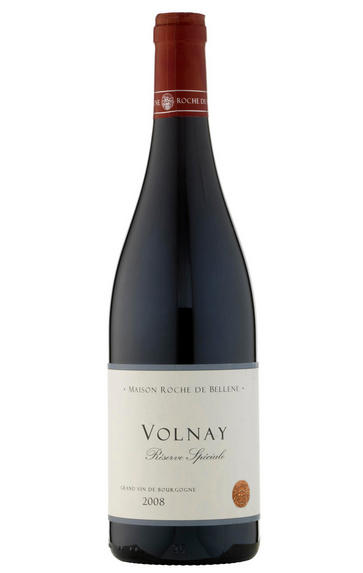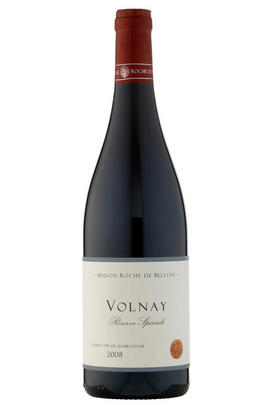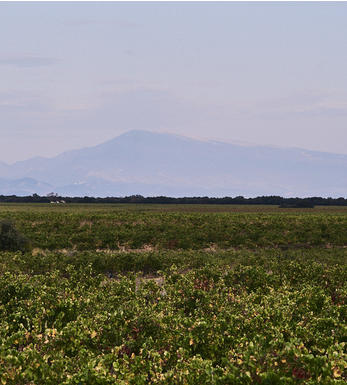
2008 Volnay, Réserve Spéciale, Maison Roche de Bellene, Burgundy

Critics reviews
David Schildknecht - 29/06/2010
About this WINE

Maison Roche de Bellene
Nicolas Potel decided to set up his own négociant business after the death of his father in 1996 and the subsequent sale of Domaine Pousse d`Or which his father had been managing.
The Nicolas Potel label became an excellent source of predominantly red wines, from Bourgogne Rouge to the Grands Crus of the Cote de Nuits. His hallmark has been to make wines which respect both their vineyard provenance and the style of the vintage while remaining attractively priced.
Suffering from a lack of capital, he sold the business to the Cottin brothers of Labouré-Roi in 2004, continuing as before until he parted company with his new owners in spring 2009. Instead he has developed his own Domaine de Bellene and negociant business Maison Roche de Bellene in Beaune.
Maison Roche de Bellene has been thriving in its new setting, expanding white wine production with the same high standards and competitive pricing as the reds. An associated company is Collection Bellenum, a label Nicolas uses for sourcing parcels of older Burgundy wines from capable producers who have squirrelled away various gems from their best vineyards.

Volnay
The finest and most elegant red wines of the Côte de Beaune are grown in Volnay, a village which might be twinned with Chambolle- Musigny in the Côte de Nuits, for the high active chalk content in the soil and comparatively low clay content.
Whereas in earlier times Volnay was made in a particularly light, early drinking style, these days there are many producers making wines which age extremely well. The best vineyards run either side of the RN73 trunk road.- 98 hectares of village Volnay
- 115 hectares of Premier Cru vineyards (35 in all). The finest include Les Taillepieds, Clos des Chênes, Champans, Caillerets (including Clos des 60 Ouvrées) and Santenots in Meursault.
- Recommended producers: Lafarge, Lafon, de Montille

Pinot Noir
Pinot Noir is probably the most frustrating, and at times infuriating, wine grape in the world. However when it is successful, it can produce some of the most sublime wines known to man. This thin-skinned grape which grows in small, tight bunches performs well on well-drained, deepish limestone based subsoils as are found on Burgundy's Côte d'Or.
Pinot Noir is more susceptible than other varieties to over cropping - concentration and varietal character disappear rapidly if yields are excessive and yields as little as 25hl/ha are the norm for some climats of the Côte d`Or.
Because of the thinness of the skins, Pinot Noir wines are lighter in colour, body and tannins. However the best wines have grip, complexity and an intensity of fruit seldom found in wine from other grapes. Young Pinot Noir can smell almost sweet, redolent with freshly crushed raspberries, cherries and redcurrants. When mature, the best wines develop a sensuous, silky mouth feel with the fruit flavours deepening and gamey "sous-bois" nuances emerging.
The best examples are still found in Burgundy, although Pinot Noir`s key role in Champagne should not be forgotten. It is grown throughout the world with notable success in the Carneros and Russian River Valley districts of California, and the Martinborough and Central Otago regions of New Zealand.


Buying options
Add to wishlist
Description
Taking the place of our usual Vieilles Vignes bottling is this Réserve Spéciale. It is, in fact, a cuvée of Premier Cru Volnay Santenots but cunningly secured at a Village wine price. Do not hesitate! It is marvellously succulent; a terrific wine for the price.
Medium bright red in colour, this has a little touch of bacon fat on the nose. This has rounded out beautifully on the palate, the initial acidity becoming integrated into the fruit and body. Allow time in the glass and the more perfumed nose of classic Volnay will start to come out, and the palate soon adds a layer of velvet.
Jasper Morris MW, Burgundy Wine Director
wine at a glance
Delivery and quality guarantee